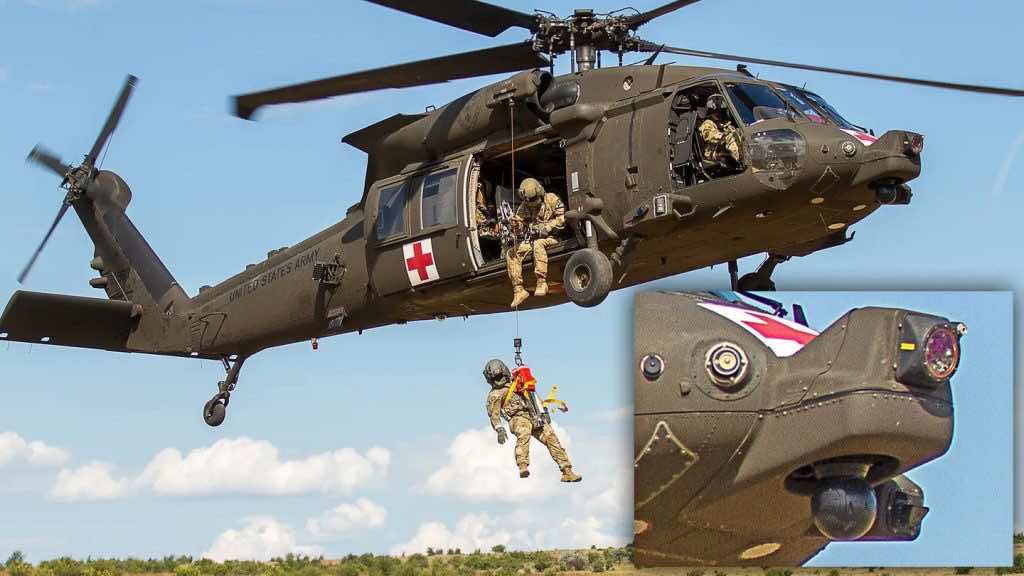In order to carry out search and rescue operations with more efficacy in bad weather conditions, the U.S. Army and U.S. Special Operations Command Centre granted a contract to “Sierra Nevada Corp.” for the development of DVEPS (Degraded Visual Environment Pilotage System). The system offers support to pilots during operations in bad visibility conditions including dust, storm, sand, snow, etc. It is mounted on the nose of the helicopter and a black round gimble as depicted in the picture below integrates a “Medevac Mission Sensor” that functions by projecting a “forward-looking infrared sensor turret (FLIR)”.
In addition to that, DVEPS is also equipped with a LIDAR sensor (Light Detection and Ranging) along with long wave infrared cameras that give a 3D view of the surrounding area covering all the terrain features and buildings in the vicinity as well. When weather conditions are bad and pilots can’t see due to the low visibility, then it becomes extremely difficult for them to rescue the injured soldiers by locating them in areas of uneven terrain or forested zones. Hence, this incredible sensor is a cutting-edge technology developed for pilots that made them enable to conduct smooth operations.
Moreover, the DVE condition has been further explained by the DEVCOM as, “a reduced visibility of potentially varying degree, wherein situational awareness and aircraft control cannot be maintained as comprehensively as they are in normal visual meteorological conditions and can potentially be lost.” As of 2021, these prodigious systems were installed on 15 Army HH-60Ms and recently seen this system being deployed on the medical evaluation helicopter which was participating in “personnel recover training” at Romania on July 12th.
An Army spokesperson further shed light on the system saying, “The system also provides an image of the LZ to assist in identifying the location of the patient and obstacles to extracting the patient in a quick and safe manner.” Coupled with this, Greg Cox, who is an executive vice president for SNC’s Electronic and Information Systems business area, said in 2015, “DVEPS offers a leap-ahead capability to enhanced situational awareness today and provides the foundation for an incremental growth path to a much greater capability such as pilotage or supervised autonomy.”
In the case of helicopters, it is not possible for the pilots to wait until the weather conditions become good enough to fly. Instead, they have to prepare for any type of contingency situation independent of how bad the weather is. Therefore, the system serves as a tactical advantage for the U.S. Army, and as DEVCOM stated, “The goal is to convert DVE into a combat multiplier by creating an advanced capability. This will enable commanders to conduct deliberate operations in DVE with confidence that their crews will be safe and their missions successful. “

